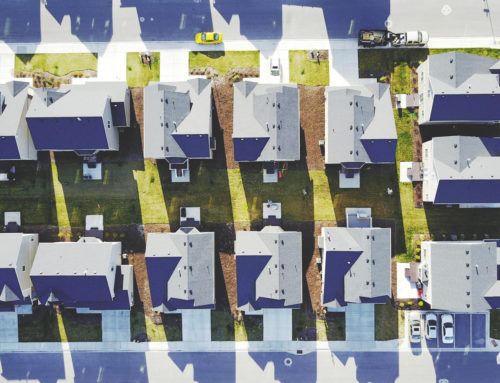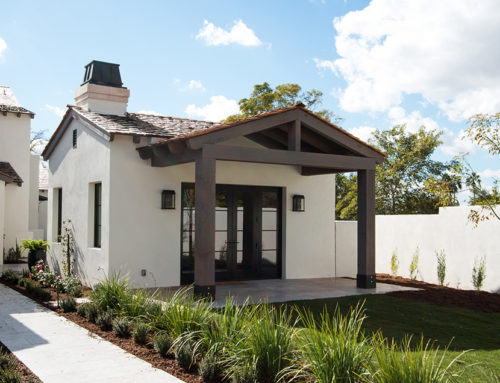Also known as granny flats or in-law units, the state of California recently put into effect in 2017 as a creative and affordable solution to the housing shortage by making accessory dwelling units (ADU’s) easier to build. I personally am a strong proponent for this as I believe it will increase rental units to help stabilize the market rent while helping some homeowners, particularly the younger ones, cover their mortgage payments. It’s another method to house hack if you will, and a little bit different than a duplex from a financing perspective. If you buy a single family home to put an ADU on it, you’re not restricted to the higher required downpayment by Fannie/Freddie and your loan limit can be higher as well. Unfortunately in places like Bay Area or Los Angeles metro the supply and demand have been so out of whack I don’t think ADU’s will provide much relief on purchase price.
ADU’s have actually been around for a while since the 1960’s but they just haven’t been that popular in the past. The new regulations made it easier to build in terms of parking requirement exemptions, lowering setback requirements, and the general approval process. If the ADU is within 1/2 mile radius from a public transit, including bus, VTA, BART, Caltrain etc, you’d be exempt from the parking requirement many municipalities have compared to regular housing construction. City of San Jose for example, also reduced the setback requirements from 15 to 20 ft, depending on the zoning, down to 5 ft. Often the property owner is not required to have a separate meter and you can have your plans approved within 120 days.
However, as with most policies, the topic of ADU’s is ongoing and evolving with different points of view. First, there is the conflict of actual governing. Although this was a state driven initiative, many cities have adopted their own ordinance to better fit their communities. There are some areas they must comply with the state legislature, such as the 120 day approval period, the rest can be very case by case or city by city. For cities such as Milbrae that has not adopted an actual ordinance related to ADU’s at the time of this post, they default to what the state has set in place. There is also the matter of opinion of local residents, who might feel like they bought a single family home and want to feel like they live in a single family home with a yard etc now the entire street looks more like duplexes.
There is also anticipated changes to the actual ordinances themselves as agencies receive feedback and comments–what is the lot size requirement, FAR, and lot coverage etc. For example, San Jose is proposing a change for the lot size requirement from 5,445 sf down to 3,000 in July 2018. Homeowners and investors are best served by checking with their local zoning codes or planning departments before making any investment decisions that could be hard to reverse. The specifics of each requirements is really outside of the scope of this post. The minimum size you can build is probably around 270 sf for the bathroom, kitchenette, and studio living space requirement, while the largest might go up upwards to 1,200 sf for a 2 bedroom or 3 bedroom ADU. The main thing to pay attention to is the FAR and lot coverage and how it fits with the type of ADU you’re building:
- Detached – Best for maintaining privacy and independent rental
- Attached – Flexible to expand the size of your current residence
- Interior conversion, aka Junior ADU: Part of the existing home, usually the basement or attic. These require a kitchenette, access to bathroom, and separate entry. From an ROI perspective, these are the best as often all you need is adding some plumbing or walls instead of building an entire structure.
- Structure conversion – such as garage conversion or build on top of the garage for example.
The cost to build ADU’s widely varies depending on which type mentioned about. For a standard detached I’ve heard around $150K give or take depending on which city you reside in all in for your foundation, hard construction costs, soft design costs, and permits etc. If you’re using a pre-fab or modular built unit you can prob bring the costs down to $100-120K.
As for the increase in value and property tax, the county assessor will most likely increase your tax bases by the replacement cost method. For increase in property value, there isn’t a lot of comparable properties and can be more of a challenge. I looked up for San Jose for single family homes sold in the last 90 days and only 10 out of 1150 or so properties have ADU’s. The difference in average value was about $100/sf while the largest difference was almost $500/sf. The only advice I can say is do not assume you can sell at the same $/sf as your regular home.
There are some great resources out there online. For example San Mateo Home for All initiative or Hausable.com have great toolkit and knowledge base for property owners or investors looking to learn more. Your local agencies will also have a wealth of information on steps to take. As always, I’m available to help if you’d like a free consultation or second opinion.
I want to thank our panelists for Snowball Real Estate Investment Networking Meetup for sharing their valuable experience and insight last night with over 50 people and summarized here:
- Alex Tsang, Direct at Harris & Associates. Planning Commissioner for City of South San Francisco
- Corbin Jones, Principal at OVID [Design+Development]
- Kent Baltare, CA, Assistant Controller at Dragonfly Investment Group
Thank you to New York Life for providing the excellent meeting space and equipments. Post any comments of feedback you have below or on Meetup.com to help others find out about upcoming events. Message me if you have speaker suggestions or topics you’d like to hear about. We meet every 3rd Wednesday of the month and our next one is on Wed June 20, sharing some tax-free investment tips through self-directed IRA.






